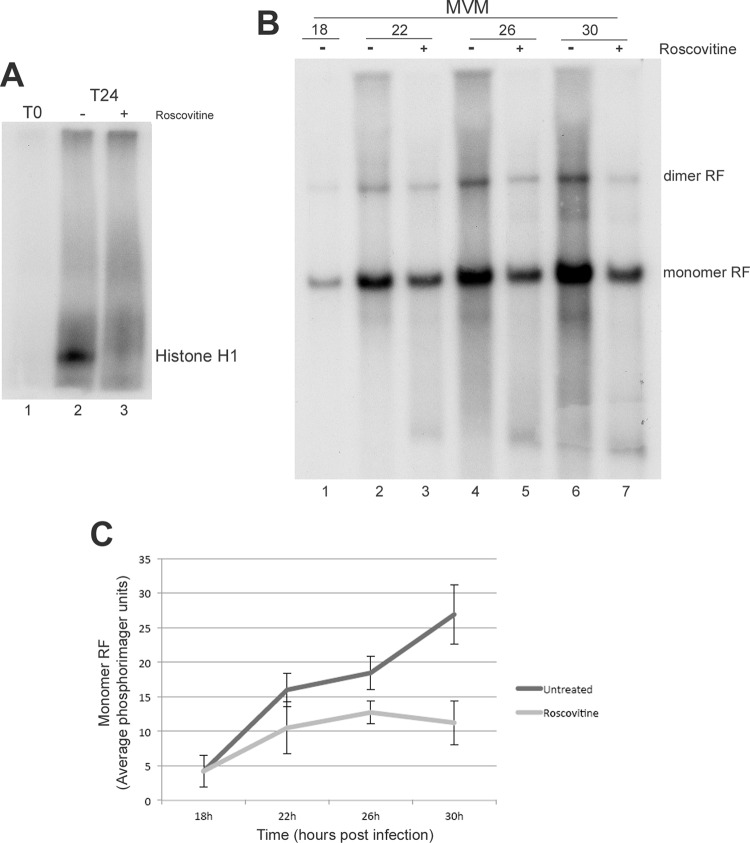Fig 4.
(A) Inhibition of Cdk2 activity by roscovitine treatment. A9 cells parasynchronized by isoleucine deprivation were harvested at the time of release (T0) and 24 h after release (T24) (lanes 2 and 3). In the sample shown in lane 3, roscovitine was added for 6 h at 18 h after release. Lysates were quantified, immunoprecipitated, and used for kinase reactions as described in the text. Samples were run on 12% SDS-polyacrylamide gels, dried, and used for autoradiography. (B) Roscovitine treatment affects MVM replication following S-phase entry. A9 cells parasynchronized by isoleucine deprivation were infected with MVM at the time of release at an MOI of 1. At 18 hpi, cells were treated with vehicle or roscovitine for 4, 8, or 12 h and harvested at 22, 26, or 30 hpi, respectively. Cell lysates were used for Southern blotting. Equivalent loading was confirmed by measurements using a nanodrop spectrophometer as well as via ethidium bromide staining of cellular DNA. The positions of monomers and dimers of the 5-kb double-stranded replicative form (RF) are shown to the right of the blot. A representative blot is shown. (C) Quantification of the replication. The monomer double-stranded replicative forms from the Southern blots (an example of which is shown in panel B above) were quantitated using phosphorimager analysis (10). Data points represent averages from three independent experiments. The error bars represent the standard deviations. At both 26 and 30 h, the values for the treated samples were significantly different from the values for the untreated samples, with P values of <0.05.

